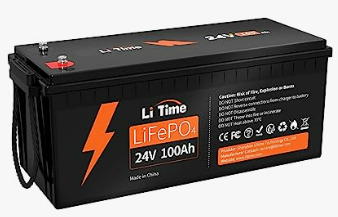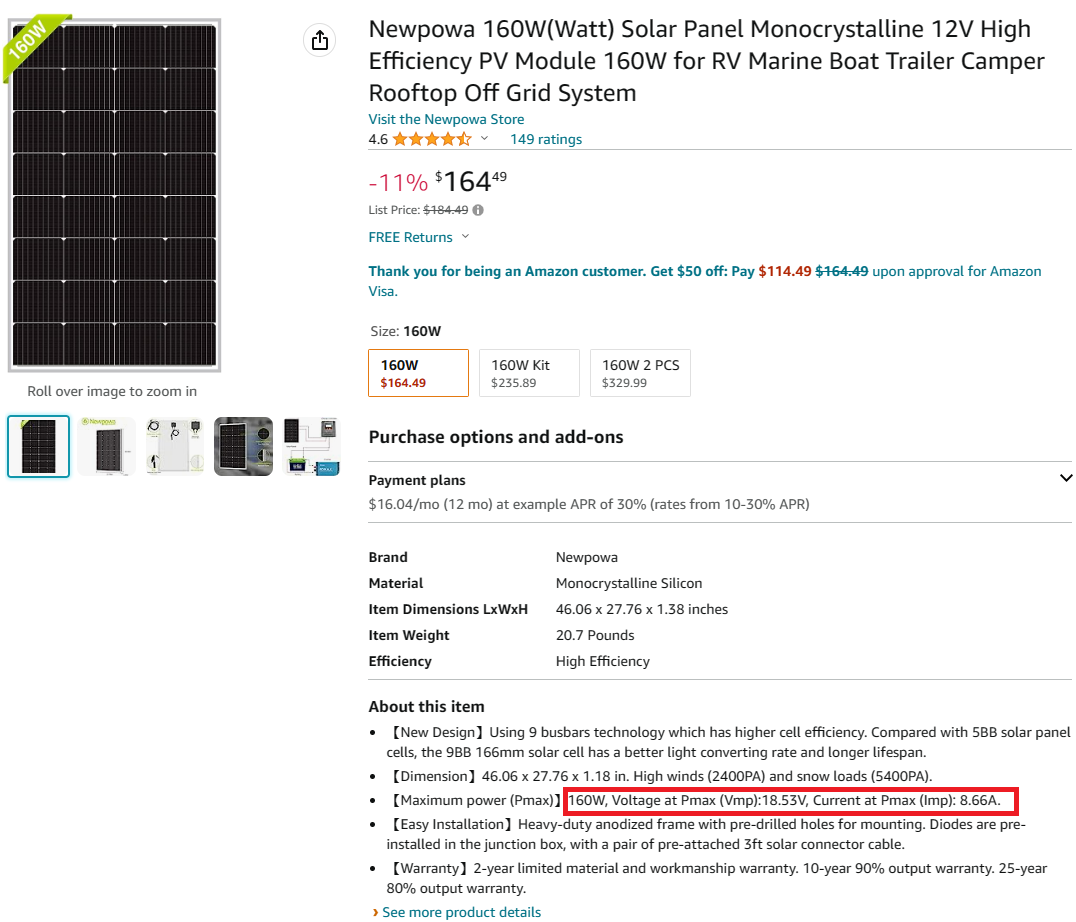When to Use a 24V or 48V Battery System Instead of a 12V System

In this article, we go over some key facts and give suggestions on what battery voltage you should build your power system on.
We give some insights into what determines which battery you should ideally use.
When working with batteries based on voltage, there are really 3 types found on the market, 12V, 24V, and 48V.
To a beginner, it may be confusing?
Which should you use?
Let's just mention some key points first.
Out of all the voltages, which voltage is the least?
It is 12V.
12V is the smallest voltage out of all the other voltages.
Therefore, 12V is ideally suited for some power loads, such as powering a few energy-efficient lightbulbs (one may consume around 40 watts or so), or charging a cell phone (2-6 watts), charging a laptop (around 30 watts), running a fan (around 50 watts), etc.
A 12V system is fine when you are using low power.
But to around what extent?
Now we'll get a little personal technical.
So every appliance that you use uses power.
In terms of electricity, power= voltage x current (or P= VI)
Therefore, if you have smaller voltage, in order to get the same amount of power, you would need more current.
Now, if we rearrange this formula a little, we get, current= power/voltage.
One of the most important things when we are designing or building your power system is current.
Current is a very big deal.
When you touch a very high-voltage wire and you were to get shocked even to the point of death, it's the current that flowed through your body that killed you.
It's not the voltage, it's the current. It's the current ultimately that is really the danger.
When a house fire starts due to an electrical fault, it's the current flowing through the power that started the fire.
When current flows through wires and a circuit, it generates power, some of it being energy that dissipates in the form of heat and this can cause a fire.
Ultimately, when you're designing a power system, it's the current that you really want to be concerned.
It's the current that can start a fire and burn down your house.
So you always want to calculate current and be within the safe guidelines when dealing with current in a power system.
So what should current be limited to a circuit? Or what should be the maximum current you should deal with?
Ultimately, this depends on the wire that you are using in your power system, the AWG of the wire determines how much current it can safely manage without smoking or melting due to exceeding its current capacity.
There are several different types of wires. For NM, TW, and UF Wire, 12 AWG can handle 15A, 12 AWG can handle up to 20A, 10 AWG can handle up to 30A, 8 AWG can handle up to 40A, and 6 AWG can handle up to 55A. For SE cable, 8 AWG can handle up to 50A, 6 AWG can handle up to 65A, 4 AWG can handle up to 85A, 2 AWG can handle up to 115A, and 1 AWG can handle up to 130A.
As you can see with AWG, the lower the number you go down to, the thicker the wire or cable is; thus, the more current it can handle.
Since the material is so much thicker to be able to accomodate the current capacity, the more expensive it gets as the AWG decreases.
Thick wire is much more expensive and harder to come by than thinner wire. Thus, it is recommended, if possible, to keep current low, so that you do not have to buy very thick and sometimes hard-to-get wire.
When shopping on a popular website such as amazon, it is very common and easy to find 10 AWG wire for a power system, such as extension cables for solar panels. It isn't too hard either to find 8 AWG wire, but usually that's about the lowest it goes that the mainstream companies offer.
So generally, you want to build your system around either 10 AWG wire and the lowest 8 AWG wire.
10 AWG wire can handle up to 30 amperes of current.
8 AWG wire (not SE cable) can handle up to 40 amperes of current.
So generally, we want to limit our system to 40 amps.
So, when using a 12V battery system, this means the highest watts we really want to work with is 480 watts.
Power= V x I = 12V x 40A= 480W
After this, then we no longer want to use a 12V battery system.
After 480W, we then want to graduate to 24V.
Before we move on to a 24V system, let's look at a real-world example to see how this works.
So below is a solar panel you may come across on amazon of a 160W 12V solar panel. This one is from Newpoma.

So this is a standard solar panel you can find online.
Even though this is a 12V solar panel, you don't use this value to calculate the maximum voltage and current.
A solar panel will have a maximum power rating for power (which is the rated power, in this case 160W). It will also have a maximum voltage at Pmax, Vmp, which in this case is 18.53V. It will also have a maximum current at Pmax, Imp, which in this case is 8.66A.
Therefore, these are the values we have to use when calculating what voltage and current levels we may deal (when the solar panel is operating at full power).
Let's imagine that the 160W that this solar panel isn't sufficient. You need more power than that. You have 2 options, you can either add solar panels in series or add them in parallel. Yes, you can technically do a combination of both, but for simplicity purposes, let's choose one. If you have a 12V system such as a 12V solar charger and a 12V inverter, you may decide to keep the voltage the same. So you opt to place more solar panels in parallel. When placed in parallel, the current increases in this setup.
With a Imp of 8.66A and with our 8 AWG wire having a maximum current rating of 40A, we can connect up to 4 solar panels in parallel without exceeding the current capacity of the 8 AWG wire.
With each panel supplying 160W of power, we get a total output of 640W. The current equals 34.64A and the voltage equals 18.53V. Technically, this leads to a maximum power of 641.8792W.
So now you know how this works.
An important thing to note is that this is the current that flows in the DC portion of the circuit, meaning the DC current that flows from the solar panels to the solar charger. The solar charger then uses this DC power to charge up the battery. Some solar chargers have ports for a load, which is a load which powers by DC power. If AC is needed, the battery must be connected to a power inverter, which converts DC power to AC power so that AC appliances can be powered.
Why this is stated is that once we get to AC power, we are in a totally new realm in which the current changes. Practically all home systems will run off of either 12V, 24V, or 48V, so the inverter will have a step up transformer. This inverter will increase the voltage to either 110V, 120V, or 230V, depending usually on the country in which the person is located. In the United States, 120V is used.
Let's now assume that we are using 12V 30A lithium iron phosphate battery. This gives us a potential power of 360W when the battery is at full charge.
We want AC power though, so we connect this battery to a 12V to 120V inverter.
The inverter steps up the 12V to 120V, increasing the voltage tenfold. However, the current decreases tenfold. Therefore, this 12V 30A battery when connected to a 12VDC to 120VAC inverter will produce an AC signal of 120V and 3A of current.
So it's important to note that the inverter steps up the voltae, while stepping down the current. Thus, after the inverter, we don't need such thick wires with low AWG, because the current is significantly decreased due to the transformer.
So the current on the DC portion of our power system is the greater problem, not after the inverter, since the current is significantly decreased.
So for a 12V battery power system with a cable of 8 AWG, we do not want to exceed 480W.
Above 480W, we want to increase the battery voltage our system uses, so that we can decrease the current.
With 480W with a 24V system, we only use 20A instead of 40A with the 12V system.
To get to the 40A with a 24V system using the 8 AWG wire, we now have a capacity of 960W.
Power= Voltage x Current= 24V x 40A= 960W
So now we could safely power up to 960W in our power system without exceeding the current rating of an 8 AWG wire.
But 960W would be our limit with 24 volts.
If we need more power, we then would have to increase our voltage to 48V. This could be achieved either with a 48V battery or 2 24V batteries connected in series.
With 48V and 40A, this would allow our system to output a power of 1920W.
Power = Voltage x Current= 48V x 40A = 1920W
If you need more than 1920W, then you would either have to increase the voltage again or use a thicker, lower AWG wire to allow for more current.
So, ultimately, it's the current that determines which battery voltage you use when putting together your power system.
A lower voltage, 12V, if working with high wattage would produce too much current.
If more power is needed, instead of buying thicker and thicker wire, it may make more sense just to use a higher-voltage system.
Above 480W, it may make more sense just to upgrade to a 24V battery system and not deal with such high current. You can do this either with a direct 24V battery or 2 12V batteries in series.
Above 960W, it may make sense just to upgrade to a 48V system to avoid such high current. This can be done either with a 48V battery or 2 24V batteries in series.
If you need even more power than 1920W, then, with 48V usually being the upper limit to the voltage used, then it makes sense to invest in thicker, expensive, high current capacity cables. With a cable that can carry 80A (4 AWG cable), you have capacity for 3840W. Just make sure that all other components such as the solar charger are rated for at least 80A. The power inverter would need to be rated for power above 3840W, typically it would have to be a 5000W inverter.
So from 1W to 480W, a 12V system should be sufficient.
Above 480W to 960W, a 24V system should work well.
Above 960W, a 48V system would be best.
Related Resources
